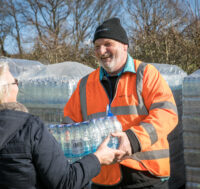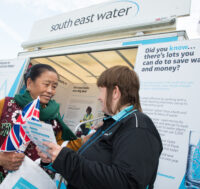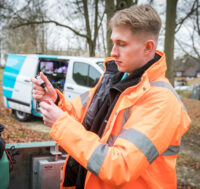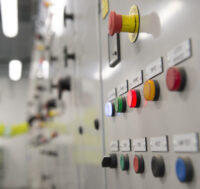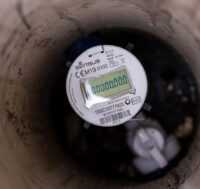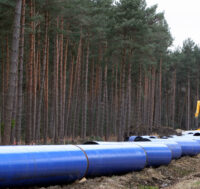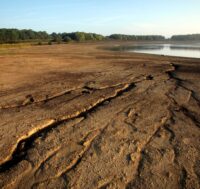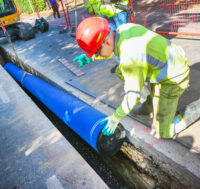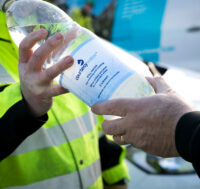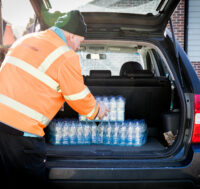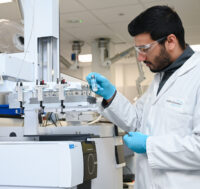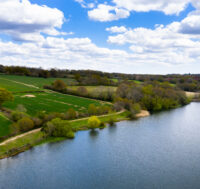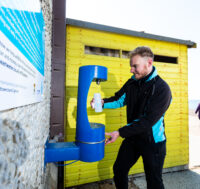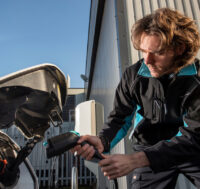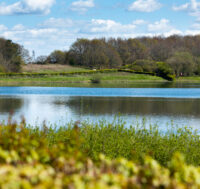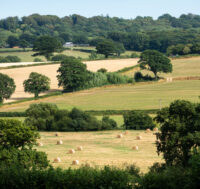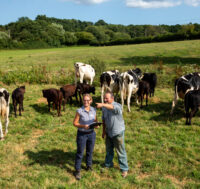Record-breaking heatwave and drought
The drought and heatwave that affected the south east of England, the country, Europe (and the USA and China) in summer 2022 were exceptional.
The drought and heatwave that affected the south east of England, the country, Europe (and the USA and China) in summer 2022 were exceptional. As a company, we did everything we possibly could to secure the essential water supply and to protect the environment. We had planned well for the summer, ensuring our water treatment works, pumping stations and underground storage facilities were working as hard as possible. This involved completing scheduled maintenance, increasing checks at the sites and replacing any equipment or fittings showing signs of wear. We also had more technical teams on standby ready to react quickly, if and when issues arose. However, even with all this planning and preparation, we could still not prevent disruption for some of our customers last summer.
Across southern and eastern England, 13 counties reported their driest July on record, including Hampshire, Surrey, Berkshire, Dorset and Kent. Kent and Sussex received just eight per cent of the average monthly rainfall in July. July and August saw temperatures significantly above average, with an unprecedented extreme heatwave from 16 to 19 July. The UK observed record-breaking temperatures exceeding 40°C for the first time during this period. Kent recorded the driest conditions since records began in 1836 and Sussex experienced the lowest rainfall since 1911.
The record temperatures resulted in an increase in our customers’ daily demand for water that peaked close to 700 million litres per day (ML/d), compared to a daily average of 530 ML/d.
This put additional pressure on our pipe network as we attempted to pump more water through at a quicker rate, and put more strain on our water resources, such as our reservoirs, boreholes and aquifers.
At the time of the Environment Agency officially declaring that we were in drought, our largest reservoir had just 33 per cent usable capacity. Water demand levels in Kent and Sussex reached record highs. We had prepared and planned for an increased demand during this period and produced an additional 120 million litres of water a day to fill up our storage tanks ahead of the hot weather. However, the water was used faster than anticipated, with demand higher than we have seen before. At peak times, demand even surpassed that seen at the height of the summer lockdown heatwave in 2020. The additional water we pumped into the network was the equivalent of adding a further four towns the size of Maidstone or Eastbourne to our network overnight.
The hot weather and lack of rain also led to ground movements, causing localised outbreaks of leaks and bursts. These affected supplies for residents in certain areas. We had been working hard to reduce the number of leaks in our network which, until the summer incident, were at an all-time low across our region. We remain committed to halving leakage levels by 2050. During the hot weather, we’d also brought more teams into the area to spot leaks and speed up repairs. From the beginning of May through to the beginning of August, we had fixed 10,647 leaks across our region and in August alone, we fixed 50 per cent more leaks than scheduled.
The weather we experienced from June through to August resulted in one of the hottest and driest periods on record. River flows were among the lowest ever recorded for some catchments in southern and eastern England.
Even though we prepare for exceptional drought events through our longer-term drought and water resources planning, temporary use bans (TUB) and non-essential use bans (NEUB) are important demand reduction measures which must be prioritised over taking more water from the environment. The day before we introduced the ‘hosepipe ban’ in August, we treated, pumped and supplied 656 million litres of water. Following the introduction of the ban, this decreased by 66 million litres or 11 per cent, which meant we could provide water for everyone’s essential use with minimal disruption to our network.
Some of our customers in isolated areas of Kent and Sussex experienced a loss of water and low-pressure issues due to an unprecedented high demand for water across our supply area during the summer. We recognise the impact that any service disruption has on our customers and deeply regret that any of our customers in Kent and parts of Sussex suffered an interruption to their supply during the exceptional drought and heatwave. We are extremely grateful for the patience and support shown by customers and stakeholders during this difficult period. Compensation payments have been made to individual customers whose water supplies were impacted. In addition, we created a Community Chest fund of £250,000 for affected parish councils to distribute within their local communities in support of community projects and good causes.
In October, the Environment Agency approved a drought permit that helped us to reduce the amount of water taken from Ardingly reservoir and brought forward our ability to abstract water from the Upper Ouse to support reservoir refill. Under the existing licence, this is not usually allowed until 1 November. The drought permit helped to stabilise storage and allowed some recovery of storage at the end of October too. By the end of October, Ardingly reservoir started to recover well. Rainfall during the month also helped groundwater levels to stabilise.
On 30 November 2022 we were able to announce the lifting of the temporary use ban earlier than expected because we had 107 per cent of the total long-term average monthly rainfall in the first two weeks of November. By 20 November, there had been nearly two months of rainfall in just three weeks. This resulted in the reservoirs starting to refill and the very dry soil starting to retain moisture, allowing water to again start seeping to recharge the aquifers that hold groundwater.






